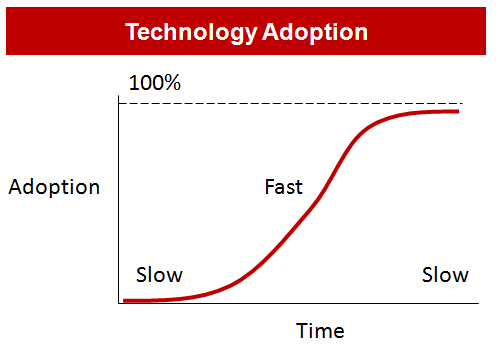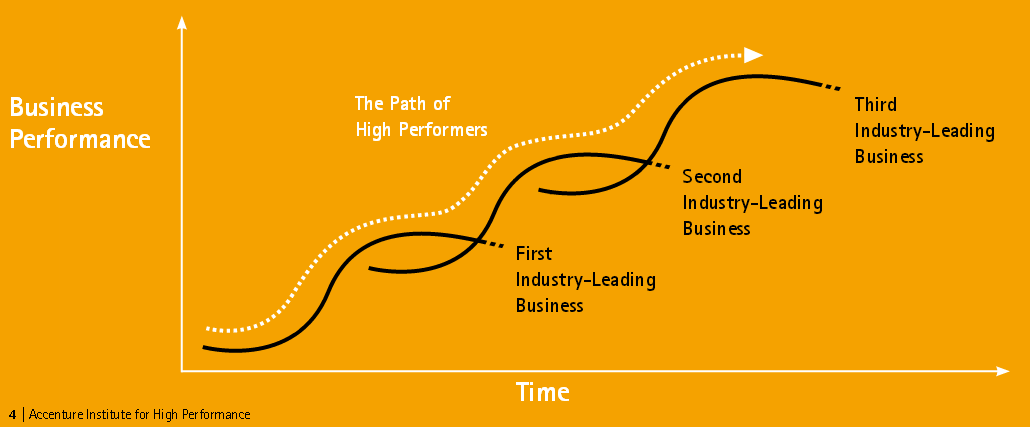Last week I used the term “S-curve” 3 times in different conversations, so either it is worth blogging about, or I need to develop a better vocabulary.
For those unfamiliar with the concept, I am sure you would recognize it if you see it. Like the name implies, the curve looks like a really fat S. It is a pretty common non-linear growth curve you see in nature, medicine, and even in business. In plain-speak, things grow slowly at first, then grow quickly, then slowly again.
What does this have to do with consulting?
In my mind, it’s a pattern you see very frequently in business and worth training your eye to see.
Diffusion of Technology
This is a theory by a sociologist by the name of Everett Rogers in the 1960s. It had a renaissance in the mid 2000s as the internet spread like wildfire and people were trying to understand how technology spread. Think about TVs, faxes, or iPhones. It starts out slowly with only the most enthusiastic techies, then grows like wildfire, until it start to reach the saturation point – when everyone has one.
If you have clients who created a technology, or are merely adopting one, think about where they are sitting on the S-curve and what it means to their competitiveness. A classic book on technology adoption is a 1990’s oldie, but goldie Crossing the Chasm (affiliate link) by Geoffrey Moore.

Revenue or market share growth
It’s common sense that you cannot grow market share forever. At some point, you reach diminishing returns and you have to find new markets, new customers, or sell more to the same customer. You need to migrate to the next opportunity. You have to “jump” to the next S-curve.
The guys at Accenture (in this case Paul Nunes and Tom Breene) argue that this type of flexible and strategic growth is not easy, but that a method exists. They compiled years of research into a book aptly called Jumping the S Curve (affiliate link). As you can see the diagram below, business performance requires change – where you are constantly planning, preparing, and plunging into new opportunities. Accenture provides a 9 step process.

Career
All of this erudite talk of industry, competition, innovation and S-curves, actually all applies to us professionally. Whatever you learned in college may be foundational, but it only gets you so far. You need to convert the raw ingredients – knowledge, energy, ambition, passion – into real output and results. Same goes for MBA or law school.
Most people will change jobs several times in their life, but when you step back and knit together the pieces, it’s easier to see your career as a series of S-curves. In this Harvard Business Review article here, they advise:
- Find hacks to accelerate your early learning
- Start developing new skills way in advance of plateauing on your existing ones
- Don’t be afraid. It takes courage to jump from one curve to another. Staying in the comfort zone is easy, but greatness occurs when you escape from it.
